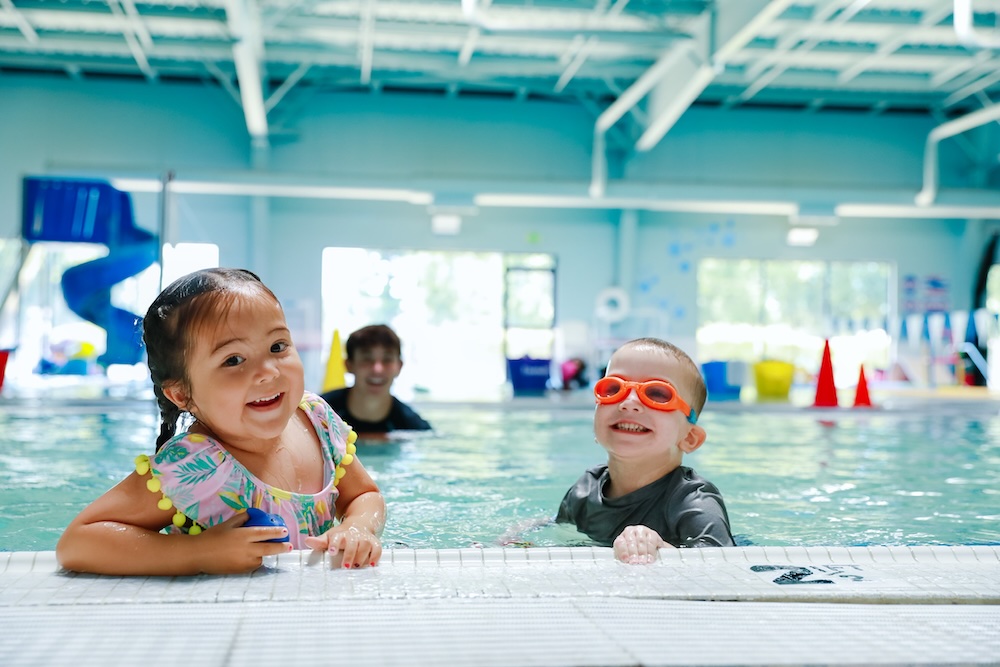Every year, preventable water-related tragedies impact families across the country. In California alone, drowning remains a leading cause of accidental death among children under five.
Here’s what many parents don’t realize: most of these incidents happen during routine activities and can be avoided with the right precautions.
Let’s walk through some of the most common water safety mistakes parents make — and more importantly, how you can prevent them.
Mistake #1: Relying Too Much on Floaties or Swim Aids
Swim aids like floaties and puddle jumpers can build confidence, but they shouldn’t replace active supervision.
These tools are not designed to keep children safe without close parental oversight.
Here’s why floaties can be misleading:
- They give children a false sense of invincibility.
- Parents may assume floaties offer complete protection.
- They are not life-saving devices and can slip off or fail.
Safety Tip: Use swim aids only during structured lessons or closely watched playtime, and always stay within arm’s reach.
Mistake #2: Letting Older Siblings Supervise Younger Kids
Older siblings may seem mature and responsible, but they don’t always possess the awareness or instincts to handle emergencies effectively.
Assigning an older child to watch a toddler in the pool, even for a few minutes, poses a potential risk. Accidents can happen quickly and silently, and it’s essential to have a responsible adult in charge.
Safety Tip: Supervision must come from a focused, responsible adult. No exceptions.
Mistake #3: Getting Distracted by Phones or Conversations
One of the most dangerous (and common) habits is multitasking near water. It only takes seconds for a child to slip underwater, and drowning is often silent.
Designate a “Water Watcher” during swim time. That person should:
- Stay within arm’s reach of children
- Avoid using phones or other electronic devices
- Refrain from chatting or engaging in side conversations
- Not be responsible for any other tasks or children
This singular focus ensures children are actively and attentively supervised at all times.
Safety Tip: Rotate Water Watcher roles every 15 minutes to maintain fresh and focused supervision.
Mistake #4: Not Enrolling Kids in Swim Lessons Early Enough
Swim lessons teach one of the most crucial safety skills a child can learn. The Red Cross reports that formal swim instruction may reduce drowning risk by as much as 88% in young children.
Here’s what swim lessons help kids develop:
- Water confidence and comfort
- Basic swim techniques like floating and kicking
- Survival skills like treading water
- Understanding of pool rules and safe behavior
- Respect for water hazards
Safety Tip: Enroll children early to help them build water confidence and basic survival skills. Structured, certified lessons make all the difference.
Mistake #5: Assuming Drowning Only Happens in Pools or Deep Water
You don’t need a deep end for danger. Drowning can occur in as little as two inches of water. Bathtubs, kiddie pools, and buckets all pose real risks.
Safety Tip: Supervise any standing water situation, no matter how shallow, and empty and store containers immediately after use.
The 5 Layers of Protection Every Parent Should Know
The National Drowning Prevention Alliance (NDPA), a leading organization in drowning prevention and water safety advocacy, recommends a “5 Layers of Protection” approach to help reduce the risk of water-related accidents.
This framework emphasizes that proper protection comes from layering multiple strategies together:
- Barriers & Alarms: Fences, gates, and pool alarms to prevent unsupervised access
- Supervision: Active, undistracted adult presence
- Water Competency: Enroll children in swim lessons early
- Life Jackets: U.S. Coast Guard-approved jackets for open water
- Emergency Preparedness: CPR training and a clear emergency plan
When used together, these layers dramatically reduce the risk of accidental drowning.
What Parents Can Do Today
Creating a safer water environment for your family starts with small, intentional actions. These proactive steps don’t require complex planning, just consistency, awareness, and a commitment to safety:
- Designate a Water Watcher for every swim session
- Avoid distractions when supervising
- Enroll your child in certified swim lessons
- Remove or secure standing water immediately after use
- Share the 5 Layers of Protection with caregivers and family members
Water safety isn’t about fear — it’s about awareness. The more proactive you are, the safer your child’s experience will be in and around water.
Make Water Safety a Priority This Summer
At America’s Kids In Motion, we believe that swim time should be fun and safe. Our certified swim instructors teach water safety skills in a supportive, age-appropriate environment.
Want to make swim safety second nature?
Enroll your child in our certified swim programs today. Limited spots are available!




